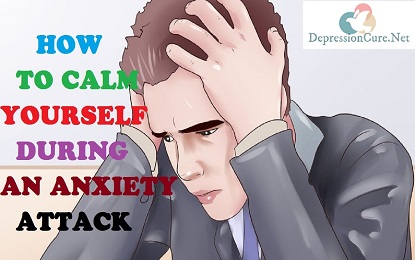What is Cerebral Palsy?
Cerebral palsy is a disorder of activity or formation in various body parts and muscles. It is mostly due to brain injury before birth.
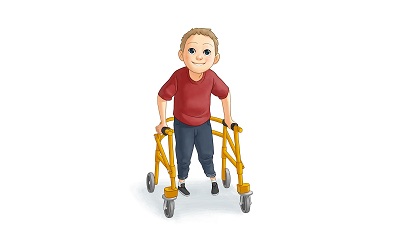
Symptoms of Cerebral Palsy begin to appear in infants or before the age of four. Generally, one or more of these problems are seen in cerebral palsy – stiffening, loosening, the incomplete or incorrect formation of muscles or other organs, inability to control them properly, abnormal posture, not able to walk properly.
People with cerebral palsy may have difficulty swallowing and usually have unbalanced eye muscles. The movement of joints decreases due to muscle tightness.
Cerebral palsy may have more or less influence on the ability to perform tasks. Some people can walk while some are not. Some people’s intellectual ability (ability to think and understand) is normal or near-normal, but some may also have an intellectual disability. Also, epilepsy, blindness, or deafness can occur.
People with cerebral palsy often have brain abnormalities, which are not easily visible but develop over time.?
Cerebral Palsy Symptoms

Its symptoms can vary greatly. Balancing activities and activities related to cerebral palsy are as follows:
- Variations in muscle stretch, such as very short or long stretches
- Hard muscles as well as their contraction, also known as “spasticity.”
- Hard muscles that do not have tightness, also known as “rigidity.”
- Lack of balance in muscles, also known as “ataxia.”
- Automated body movements, also known as “tremor.”
- Having low-speed activities and feeling pain while doing them, also known as “athetosis.”
- It takes longer than usual to do muscle-related activities, such as getting up on the arms, sitting on your own without support or walking on your knees
- Using one side of the body less than the other, such as using one hand more or less than the other, or dragging one leg while walking on its knees
- Difficulty walking, such as walking on the toes, bending gait, bending the knees inward like scissors
- Excessive saliva and difficulty swallowing
- Difficulty sucking or eating
- Delay in speaking or difficulty speaking
- Inability to do crayon or spoon

Click Here To Read: 75 Depression Quotes
Disability associated with cerebral palsy may be primarily limited to one part of the body or one side of the body, or it can affect the entire body. The disturbances in the brain that cause cerebral palsy do not change over time.
So symptoms do not usually increase with increasing age. However, the smallness and stiffness of the muscles must be treated more quickly. Otherwise, these problems may increase.
Other Brain Problems
Other “neurological” problems may also occur due to brain abnormalities associated with cerebral palsy.
People with cerebral palsy may also experience the following symptoms:
- Hard to see and hear
- Intellectual disability (loss of ability to think and understand)
- Seizures
- The feeling of unusual touch or pain
- Oral disease
- Poor mental health
- No urination
- The right time to see a doctor
It is essential to see a doctor at the right time for any activity related problems or delays in your child’s development. If you have doubts about the baby’s muscle tone (stretch), activity, balance, or other developmental problems, see a doctor.

Cerebral Palsy Causes
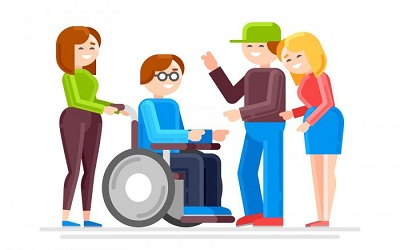
Why does cerebral palsy occur?
Cerebral palsy is usually preceded by childbirth, due to an abnormality or blockage in brain development. In many cases, the exact cause of this abnormality is not known.
Problems in brain development can be caused by a sudden change in the gene that controls brain development.
- Infections to the mother – which affects the developing fetus.
- Fetal stroke – Inability to reach the blood properly in the developing brain.
- Lack of oxygen in the brain due to hard labor or delivery. Such cases are rarely seen.
- Infant infection – causing swelling in or around the brain.
- A fatal head injury to an infant in a motor vehicle accident or fall.
Click Here To Read: How To Quit Smoking
What causes the possibility of having cerebral palsy?

There can be many reasons for this:
-
Mother’s Health
Some infections during pregnancy or due to some health problems increase the chances of the baby getting cerebral palsy. The risk of following infections is high
- German measles (rubella)
- Chickenpox (varicella)
- Cytomegalovirus
- Toxoplasmosis
- Syphilis
- Toxins
There are other reasons that may increase the risk of cerebral palsy such as thyroid problems, decreased ability to think or Caesars.
-
Baby getting sick
The following diseases in a newborn child increase the chances of having cerebral palsy –
- Bacterial meningitis
- Viral encephalitis
- Severe jaundice or jaundice, which is untreated.
-
Other reasons related to pregnancy and birth
Premature birth
A normal pregnancy lasts 40 weeks. Infants under 37 weeks of pregnancy are at a higher risk of cerebral palsy. The earlier the baby is born, the higher the risk of cerebral palsy.
- Loss of baby weight at birth.
- Infants weighing less than 2.5 kilograms are at an increased risk of cerebral palsy. The lower the weight, the higher the risk.
Breech birth
A breech birth is called the birth of the baby directly (first coming out of the leg). Babies with cerebral palsy are more likely to have breech births.
Simultaneously, more than one child is born
The risk of cerebral palsy increases with the number of children sharing the uterus. If one or more children die, the probability of developing children with cerebral palsy may increase.
Prevention of cerebral palsy
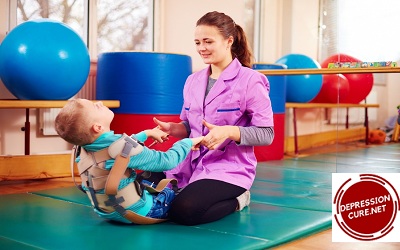
Most cases of cerebral palsy cannot be stopped, but you can reduce your risk. If you are about to give birth or are planning to give birth, then the following steps can be taken to minimize complications:
Make sure you get vaccinated
Vaccination can prevent fetal brain damage by avoiding infections such as rubella.
Take care of yourself
The healthier a woman is during pregnancy, the lower the chances of having cerebral palsy in the child.
Early and continuous prenatal care
Regularly visit a doctor during pregnancy; doing so can help you stay away from all types of illness. Regularly seeing a doctor reduces the risk of many other things such as premature birth, low birth weight, and risk of infection.
Click Here To Read: 40 Interesting Phobia Facts
Take special care of the child’s safety
Have your child use a seat belt in the car, wear a helmet while cycling, take care of the minor so that they do not fall from the bed, and take care that the child does not get any deep injury (especially on the head).
Diagnosis of cerebral palsy

If your doctor suspects that your child has cerebral palsy, they will check your child’s symptoms, get all the medical treatment of the child before, and do a physical examination.
The doctor may ask you to contact the doctor regarding the condition of the brain and nervous system.
The doctor, along with examining cerebral palsy, will do some tests to find out other possible causes, such as –
-
Brain Scan
Brain-imaging technology can detect brain damage or abnormal growth sites. These tests may include the following:
MRI
MRI can detect any lesions or abnormalities in your child’s brain. It is most commonly used.
Cranial Ultrasound
Ultrasound does not produce a detailed image, but it is used because it is fast and inexpensive, and it performs a critical initial screening of the brain.
CT Scan
To detect abnormalities in your child’s brain, a CT scan may be performed.
-
EEG
If your child has a seizure, your doctor may check for epilepsy via EEG, as it is more likely to occur with cerebral palsy.
Lab test
By taking some amount of your child’s blood, it can be examined to confirm that there is no other disease, such as a blood clotting disorder that poses the risk of strokes.
-
Additional tests
If, after examination, the child is confirmed to have cerebral palsy, you will probably be referred to specialists to assess other conditions associated with the disease. The tests will identify the following problems –
- Visual impairment
- Hearing problems
- Delay or difficulty in speaking
- Decreased ability to think and understand
- Developmental problems in the body
- Shaking problem
- Cerebral Palsy Treatment
There is currently no cure for cerebral palsy, but treatments are available to ease the lives of people in this condition and to make them more and more independent.
-
Medicine

Medications that help relieve many symptoms of cerebral palsy are available, including:
Drugs for muscle stiffness – such as diazepam or baclofen – are available in tablet or syrup form.
Botulinum Toxin Injection – An injection that relaxes specific muscles or groups of muscles for a few months at a time
- A medicine called melatonin for sleep difficulties
- Anti-Caesar drug for epilepsy
- Laxative for constipation
- Painkillers for pain or discomfort
- Medications that reduce saliva
It is not necessary that you or your children have to take all these medicines.
-
Therapy

Different types of therapy can help the afflicted person to increase functional abilities. These include the following:
Physical Therapy
Muscle training and exercise can help with your child’s strength, flexibility, balance, functional development, and mobility. You will also learn how to safely take care of your child’s everyday needs at home, such as bathing or feeding the child.
Click Here To Read: 70 Amazing Facts About Dreams
Occupational therapy
Occupational therapists work using different methods and tools to promote your child’s independent involvement in daily activities and routines at home, school, and community.
Speech and Language Therapy

Speech-language therapists can help your child improve their ability to speak clearly or communicate using sign language. Speech therapists help solve the problem of muscles used in eating and swallowing.
-
Surgical or other procedures
Surgery may be required to reduce muscle firmness or correct bone abnormalities due to spasticity.
These treatments include:
Orthopedic Surgery
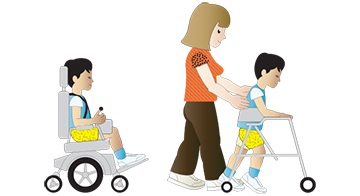
This surgery is done for children who have severe problems in the formation of bones or joints so that their arms, hips, and legs are brought to the correct position.
Surgical procedures help to increase the muscles and tendons (joints of bones and muscles) that are smaller than normal in size.
This improvement reduces pain and increases mobility. These procedures make it easier to use walkers, braces (applied in the mouth to correct the shape of the teeth), or crutches.
Veins
In some severe cases, when other treatments do not help, surgeons may cut the spinal muscular vein using a selective dorsal rhizotomy procedure. It relaxes the muscles and reduces pain, but it can also cause numbness.
Cerebral Palsy Complications

Muscle weakness, muscle mobility, and problems of balance can cause many complications during childhood or later during adulthood, including:
Contracture
Due to the muscles being very tight (spasticity), their size becomes smaller. This stops the growth of bones; they begin to curl, as well as the texture of the joints deteriorate, or they move some or all of their way.
Malnutrition
A person who has cerebral palsy may have problems swallowing or eating, especially an infant who has special needs for nutrients.
This can cause growth problems and weaken bones. Your child may need a feeding tube (a tube through which food is feed) for adequate nutrition.
Mental health status
People with cerebral palsy may have mental health (psychological) problems, such as depression. Depression can occur due to challenges of social isolation (staying aloof) and disability.
Click Here to Read: 30 Ways Stress Can Affect On Your Body
Lung disease
People with cerebral palsy may develop lung disease and breathing disorders.
Neurological Conditions
Over time, people with cerebral palsy are more likely to develop symptoms of activity disorders or neurological (brain-related) problems.
Osteoarthritis
An abnormal shape of the joints caused by pressure on the joints or caused by spasticity can lead to an early form of painful bone disease, osteoarthritis.
Note: Depression Cure does not provide any type of medical advice, diagnosis, or treatment.




